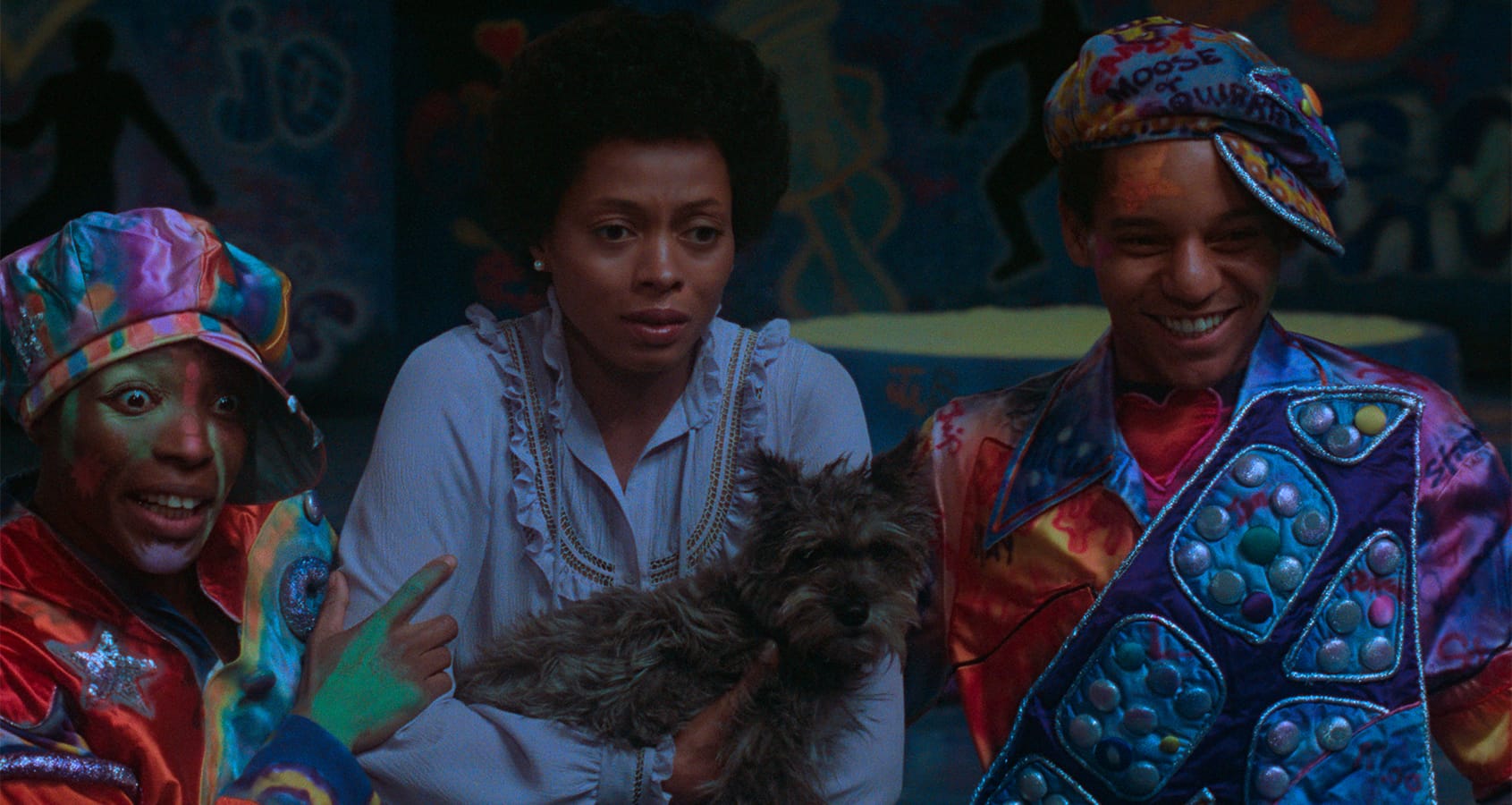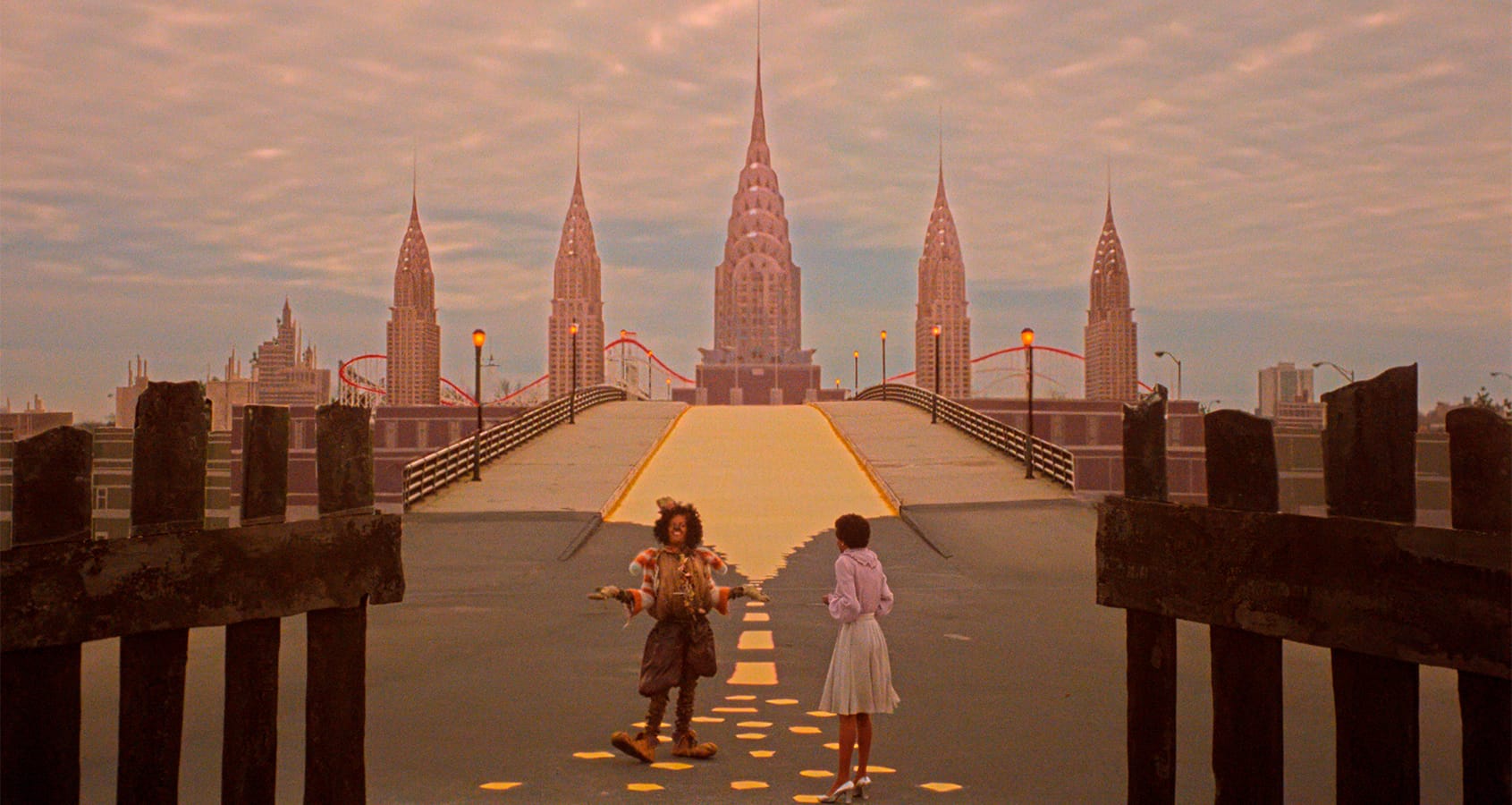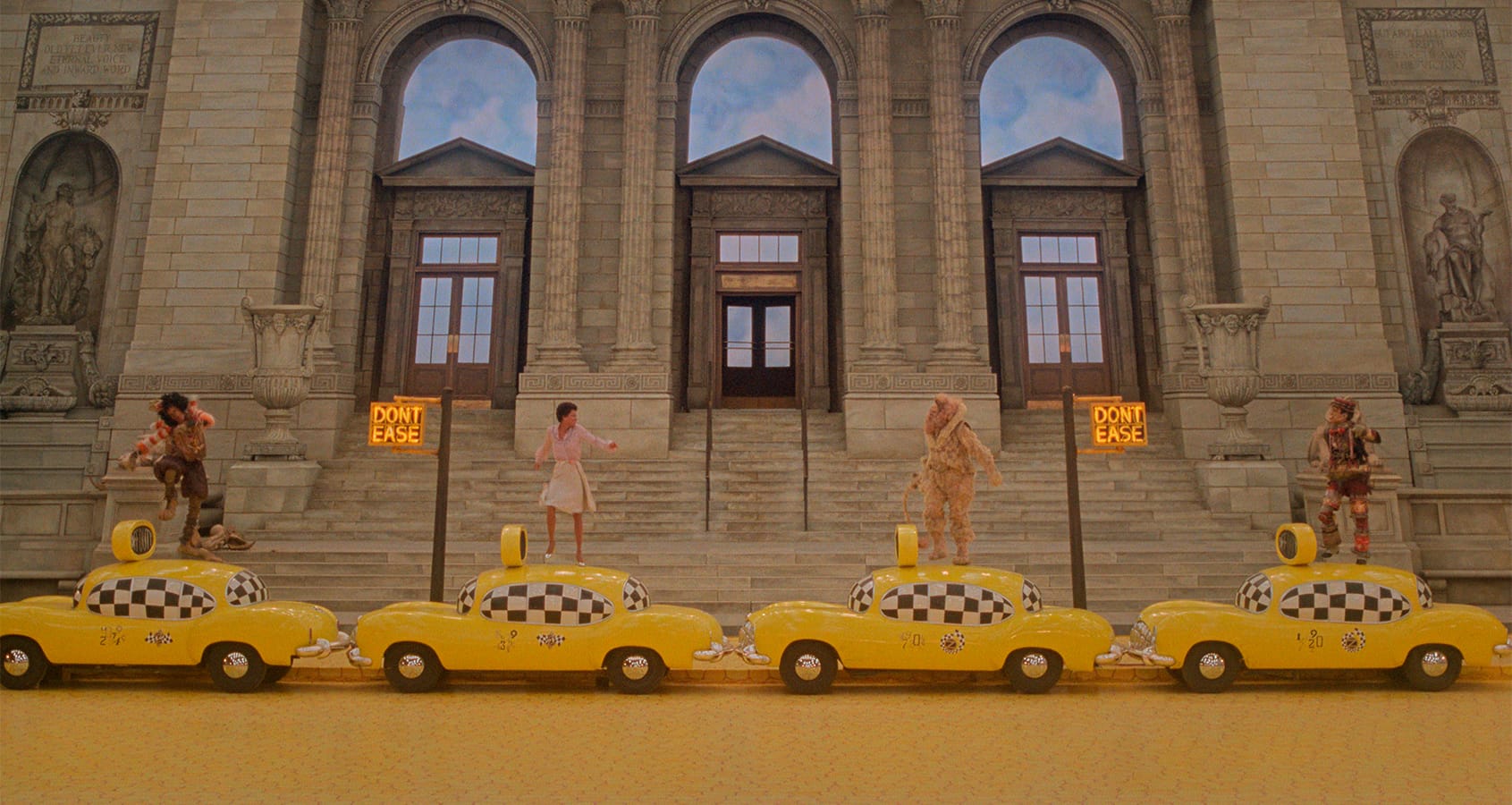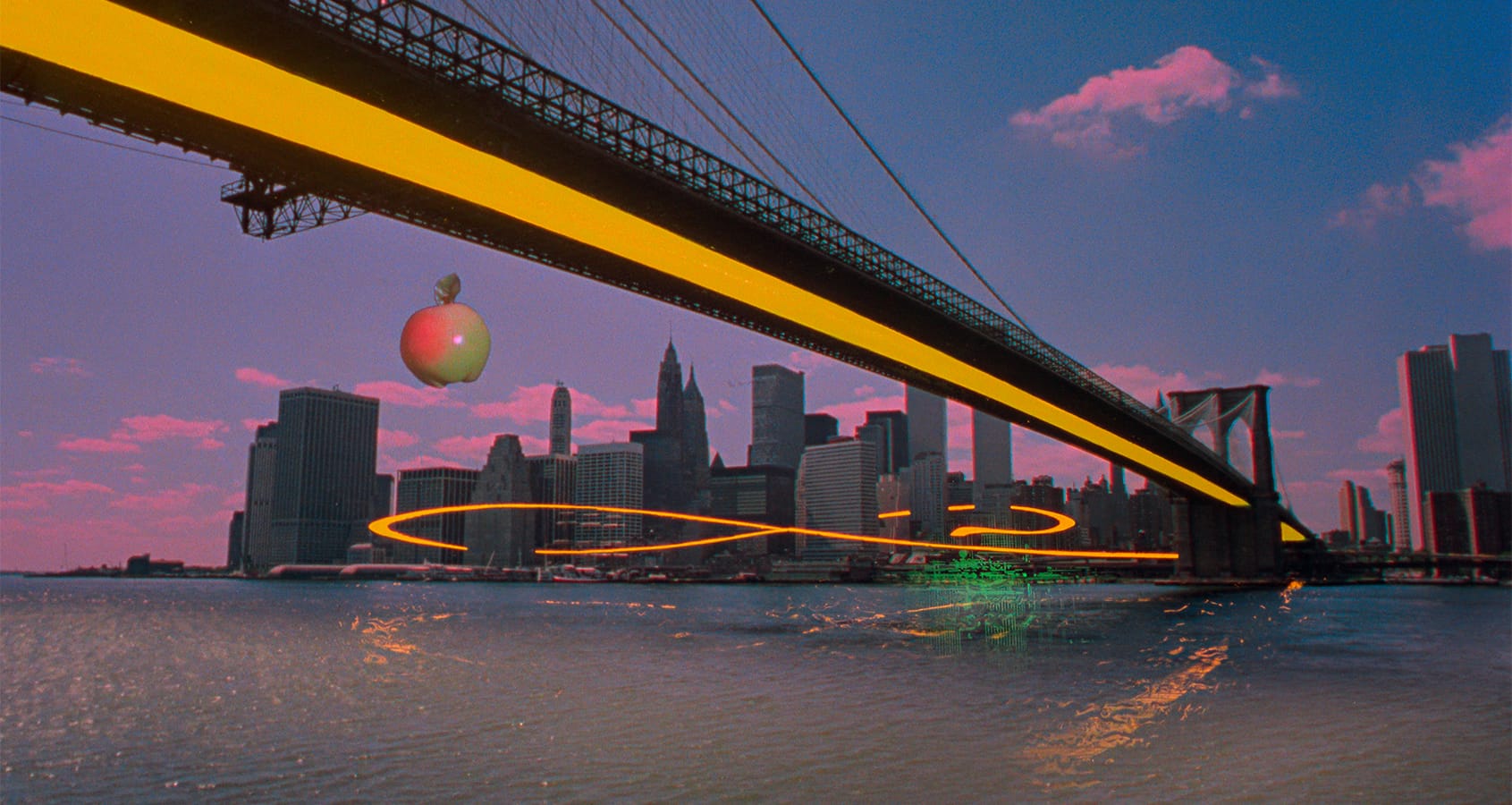THE WIZ 4K Review: Looks Great Now, and Even More Deeply Weird
Diana Ross and Michael Jackson lead Sidney Lumet's deeply weird adaptation of the Broadway stage production on a sterling Criterion 4K disc.
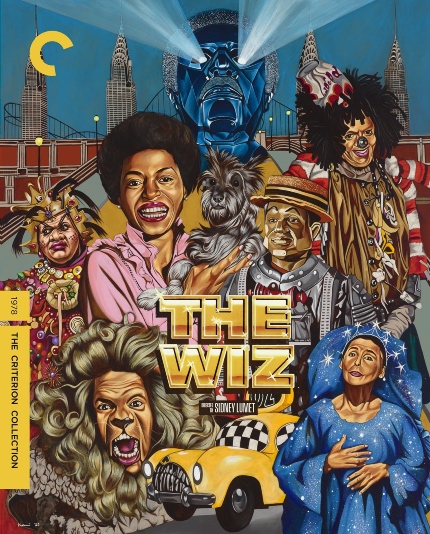
In which the director of Dog Day Afternoon, Serpico, and Network makes an all-Black musical extravaganza.
The Wiz
The film is now available from the Criterion Collection in a two-disc 4K+Blu-ray edition, as well as a separate Blu-ray edition.
Because I'd seen the film years ago on VHS and didn't very much enjoy it -- unlike Screen Anarchy contributor Richard Schertzer -- I skipped directly to the special features, available on the Blu-ray in the new edition from Criterion, and watched an 8:00 feature from the time of the film's premiere in November 1978, in which host David Sheehan, a local TV critic, covered the extravagance of the event, including his honest, negative reaction to the film.
Sheehan also interviewed Diana Ross for a few minutes, in which she spoke hopefully about her desire to act in more feature films. (Sadly, that did not happen.) The other special feature on the Blu-ray is an excerpt from the public television American Masterpieces documentary program on Quincy Jones, first broadcast in 2001, that includes Sidney Lumet talking about Jones for 12 minutes, extolling his work on Lumet's The Pawnbroker as well as The Wiz, though Lumet takes the blame for the picture not working as a whole.
Having these two special features in mind, I plunged into the third special feature, a newly recorded audio commentary by scholars Michael B. Gillespie and Alfred L. Martin, who speak warmly and enthusiastically about the movie, and point out things that I had missed entirely on my previous viewing. I also read a learned essay by critic and author Aisha Harris that also pointed out things I never thought about before.
Then I watched the film in its entirety on 4K and gained a new appreciation for the film. First of all, the 4K transfer looks lustrous. This was a high-budget (for its time) production, and that's reflected in the 35mm print. The primary colors really pop.
I was also taken aback by the incredible production design by Tony Walton, which made great use of the huge lots at Astoria Studios in Queens, New York. Some of the music and dance sequences jumped out as they had never before, especially the 'introduction to Emerald City' sequence, set at the World Trade Center, and the sequence set in a (literal) sweatshop near the end of the picture, set to "A Brand New Day" by Luther Vandross.
It's also hard not to love a sequence in which the non-human elements of a subway station come to life and begin terrorizing Dorothy and her friends. That's incredibly freaky and deeply weird.
The film as a whole is deeply weird. At the time of its release, I heard nothing but criticism from the media in Los Angeles, where I lived, including TV critic David Sheehan. I had heard of the stage production, but never seen it, and besides, all the comparisons I remember were made to the Judy Garland adaptation from 1939.
Now, after watching it several times, I can see the appeal of the film more clearly. In the context of Sidney Lumet's career, his first musical -- undertaken, he says in the American Master special, because he wanted to do something different from the gritty films he'd been making -- feels ungainly, uneven, and lumpy. But it's not a terrible choice, in view of the wide variety of genres he tackled in his long career.
And, indeed, maybe things would have gone differently with the film if Lumet had not 'lost his scenic concept in the execution,' as he admits in his marvelously instructional book Making Movies, first published in 2005. "The idea I had for The Wiz was that reality could be turned into an urban fantasy," he wrote.
"We would use real locations but use them in such a way that the locations would become truly fantastical," Lumet continued. "But I came to grief on the first scouting trip." Lumet, production designer Tony Walton, and visual artist Albert Whitlock gazed at the main branch of the New York Public Library in Manhattan for four hours. "Every idea I had to fantasize that building was, Albert told me, impossible. Slowly my heart sank. We finally decided to build the set in the studio."
Elaborating further, Lumet says that what was meant to be a "heavy location picture" gradually became a studio picture: "Fantasy took over to such a degree that the urban quality was lost. ... It was my own fault. I simply didn't know enough technically to master all departments, particularly special effects. ... I could feel the visual approach leaking out of my hands like water through my fingers. It happens."
Watching the film now, Lumet's visual intentions remain clear. One could only imagine what he could have done with today's visual effects technology. As it is, many great, startling and truly beautiful shots and sequences stand out and make the picture worth watching.
What remains consistent is Diana Ross' performance. Playing a naive 24-year-old character -- who has never ventured below 125th Street, which might explain the film's fantastical and utterly cracked geographic dislocations -- the 30-something Ross, a mother with three children at the time, is entirely captivating. She is entirely at one with Dorothy, a timid person with a kind and tender heart, a keen sense of where she wants and needs to go in her life, and a great deal of courage to accomplish her newfound purpose.
Ease on down the road, indeed.
The Wiz
Director(s)
- Sidney Lumet
Writer(s)
- L. Frank Baum
- William F. Brown
- Joel Schumacher
Cast
- Diana Ross
- Michael Jackson
- Nipsey Russell







